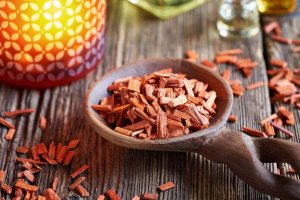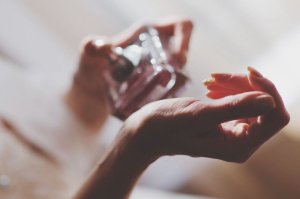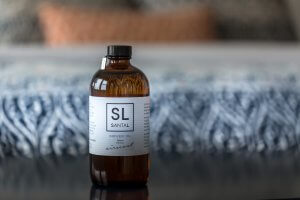To distinguish between true clean fragrances and phony ones, look for fragrances that contain natural ingredients and avoid those with synthetic fragrances. Check for certifications from trusted organizations that verify the fragrance is free from harmful chemicals. Additionally, a true fragrance that is “clean” will have a shorter ingredient list and avoid commonly used toxic chemicals like phthalates and parabens. Our team explores the beauty of this growing fragrance category and shares some tips to help identify a true clean fragrance.
Synthetic materials are ubiquitous today in the realm of perfumery and scented products. Some of them are just as toxic to humans as the second hand smoke of decades past.
Understanding the meaning of clean fragrances opens a brand new vista of both fragrance and benefits. They are loosely defined as scents that are created without harmful ingredients.
There is no hard definition of “clean fragrance,” as it translates loosely into one that is free of parabens, phthalates, silicon, PEG, artificial dyes, BHT, BHA and sulfates.
More and more frequently, perfume brands are opting for pure and natural essential oils for their formulations, which are botanical in nature.
Clean fragrances are not the opposite of dirty fragrances, which refers to notes that are dark musky, fecal and earthy.

The two words in perfume are never applied to their traditional definitions.
Natural fragrances should not add to the confusion (even though they sometimes do) because they signify only that ingredients are extracted from raw materials and many times, these are not properly regulated.
Our master perfumes at Alpha Aromatics know better than most that the creation of clean fragrances is no easy task.
There are about 800 raw materials that fall into the natural category vs about 3,000 synthetic ingredients.
According to a spokesperson at Free People, a company that specializes in women’s retail apparel and cruelty-free fragrances: “It’s important for us to know where each ingredient comes from, how it is processed, and …manufactured—like with extraction, steaming, or distillation. This keeps the formula extremely pure and clean, from our standpoint.”
Clear Fragrances – How Did It All Begin?
The lifestyle brand known as clean perfume was created in the United States in 2003 by amazing entrepreneur and leading mover and shaker within the perfume industry, Randi Shinder.
She is a creative force to reckon with, and her launch of the highly acclaimed CLEAN perfume was designed to offer a one of a-kind olfactory experience that is the epitome of the word, clean.
Its ultimate meaning is defined as “women just want to smell good.” Inspired by the simplicity of a bar of fragrant soap, this first fragrance led to many others that celebrate the beauty of pure and honest scents.
These include: freshly-showered skin, fresh laundry and crisp cotton tee shirts.
How To Tell Phony Clean Fragrances
The first test is the nose. A product label may claim to contain the smell of orange, but after a deep whiff, does it smell like orange or maybe just a little orangey?

Due to the fact that perfumes are classified as proprietary information, companies do not have to to share the ingredients of their formulations and can hide them behind the word, parfum, unlike other more regulated sectors of the beauty industry.
According to Michael Benmayor, vice president of Firmenich: “Consumers are concerned about the health impact of chemicals and their products…In the absence of a universal definition of clean, each manufacturer, retailer and brand creates their own.”
It should be noted that reputable strive for honest labeling and cleaner formulas.
According to Douglas Little, founder, CEO and perfumer for Heretic Parfum:”…There’s a lot of smoke and mirrors around the green washing of the clean movement.
For example, a lot of companies market their fragrances by saying they don’t use phthalates or parabens, but truth be told, phthalates haven’t been used in fragrances for a long time.”
Adding to the confusion, is the fact that clean, nontoxic and natural are terms that are often used indiscriminately to describe fragrances.

Fragrances formulated without harmful ingredients are said be clean, while natural translates generally into a formulation containing ingredients that are extracted from raw materials.
In the words of Cat Chen, founder and CEO of the Skylar line of clean perfume and body care products: “Consumers expect transparency now. When you read an ingredient label for a fragrance, you basically see alcohol — or ethanol, which is the type of alcohol most fragrances use — along with fragrance or parfum, which is a Trojan horse of what could literally be thousands of ingredients, including allergy-causing ones, and water…People might think clean equals natural and that’s probably better, but actually, it can be the opposite. Many natural fragrances, like essential oils, can cause allergic reactions…”
Sorting through the morass of diverse terms and loose definitions, it’s important to know exactly what to look for when reading the label on either a perfume bottle or any scented product.
For example, a person with sensitive skin should look for the word, hypoallergenic, and avoid it like the plague if the product contains artificial dyes, BHT, BHA or sulfates.
Many perfume formulators guarantee transparency by disclosing entire ingredient lists as well as the reason why a particular item is being used for every product.
Bea Shapiro, founder of the Ellis Brooklyn clean perfume line states:
“Another difficulty: If a brand hires a fragrance house to develop a scent (a very common practice), the brand itself isn’t always privy to what’s in the bottle, because sometimes the perfumery owns the recipe. Since many companies don’t have in-house perfumers, they turn to them to develop and manufacture scents.
If a brand is working with a perfume house, they can ask for ingredient transparency, but they’re not guaranteed to get it.”
In the end, transparency will become the norm only when enough consumers stand up and fight for it.
In the words of Cat Chen: “Challenge brands on what they’re using, and to disclose their ingredients. When you go into a store, ask if they have a clean fragrance. A consumer’s request goes a long way. In essence, never forget or downplay your power, even if that’s used to find a signature scent that you love and that loves you back.”
What Are The Benefits of Using Clean Fragrances?
There is little that can compare to the exalted, fresh feeling of wearing a clean fragrance.
The whisper of luxury and sophistication is meshed into this olfactory experience, as these scents are more expensive than traditional perfumes.
In addition to being beneficial to health, clean fragrances are also better for our challenged eco-system.

Conventional fragrances utilizing artificial materials leave a much larger carbon footprint than natural varieties.
Sustainable, responsible brands often choose recycled paper and biodegradable containers for their products as well.
A Few Of Our Recently-Designed “Clean Fragrances”
This wild, robust fragrance is a rich, delightful blend of airy, light top notes and deftly layered, heavier heart and base notes of haunting jasmine, earthy, musky ambergris, soft, intimate saffron and warm, deep and slightly oily cedar wood. This scent is the ultimate in luxury.
Bold, exotic and captivating, this fragrance evokes the dark mysteries of the eternal majesty of the forest melded with the crackling warmth of an open fire.
An exotic olfactory carpet ride into a swirl of smooth, creamy Australian sandalwood, sweet and woody cardamom, smoky, leathery papyrus, raspberry-nuanced iris and sensual, musky ambrox, this intense scent transports to another far away realm long lost in time.
Distinct and robust in character, this formulation streams with head notes marked by facets of fruity, slightly pungent banana, fresh, herbal and leafy green, crunchy apple and raspberry nuanced iris.
A heart note soon follows featuring sweet wild berries, tangy black currant, spicy, woody cardamom, powdery violet and warm, inviting cinnamon.
A dry down of sensual, dark patchouli, dry cedar wood and smooth, creamy sandalwood complete this compelling fragrance.
Luxury and indulgence are the two words that come to mind with this olfactory narrative of remote realms and distant shores.
Head notes stream with citrus facets, followed seamlessly by a heart note bouquet of romantic, musky red rose, intense, sugary and rich jasmine petal, and clean, soft and exotic white tea bud.
A dry down dominated by aromatic, erotic white musk completes this enchanting fragrance.
This soothing, delicate scent opens with citrusy top notes of succulent orange, fresh, bright melon and sharp lemon zest.
These aspects soon fold into an aromatic heart note featuring frangible, rare and sweet white tea bud, dry, exotic bamboo and dreamy, musky rose.
A dry down of earthy, sensual white musk and ozonic, sun-dried driftwood finish this beguiling fragrance.
In Conclusion
Clean fragrances may be the wave of the future, but it’s important to know the difference a true clean fragrance and one that is not.
Our mission at Alpha Aromatics is to design, create and supply the world’s finest, high quality scents one fragrance at a time, all the while meeting the guidelines and quality standards set by The Research Institute for Fragrance Materials (RIFM), International Fragrance Association (IFRA), Oregon Tilth, International Sanitary Supply Association (ISSA) and the Natural Products Association (NPA) and the International Organization of Standardization (ISO).
If it’s a clean fragrance you’re looking for, look no further!

Photo Credits: Pixabay
 alpha aromatics®
alpha aromatics®